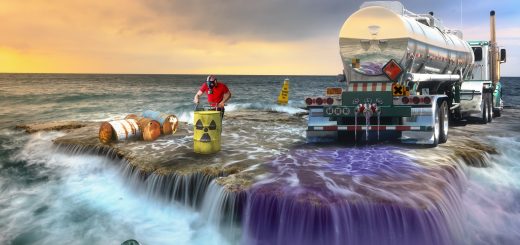Our earth

Author(s): Anatolia College
Lesson plan summary
Through this lesson plan students will learn about green Chemistry, our earth and how human activities can affect the environment. After an introduction to green chemistry and the earth, they will be presented to climate change, to human actions responsible for this environmental issue and they will be motivated to use their imagination and think of ways to save the environment. They will learn about the greenhouse gases and the nitrogen cycle along with their impacts on the climate change. Finally, they will be given instructions for easy DIY constructions of a mini composter and a greenhouse.
Aim of the lesson
By the end of this lesson students will:
- Understand what Green Chemistry is
- Be familiar with the climate change
- Understand the nitrogen cycle and be familiar with the greenhouse gases
- Find ways to help save the environment
- Construct a mini composter and a greenhouse
Activities
| Name of activity | Procedure | Time |
| Introduction to Green Chemistry | Start the lesson with introductory questions: What does a chemist do? What are some chemical products? What do you think about when you hear the words “Green Chemistry”? What is environmental science?Students can watch the introductory video … ( MAKE VIDEO ) Students will be introduced to the 12 Principles of Green Chemistry.Activity: Think about what Green Chemistry means to you.Present the 12 principles in your own words.Students will be divided in groups. Each group will be assigned with a green Chemistry principle and will be asked to present it with a skit, a drawing or even a song to their classmates. | 45 min |
| The earth and the climate change | Start the lesson by giving the students some information about the earth, its surface, the atmosphere (its composition and how it prevents us from meteors, from the sun’s harmful radiation and helps trap the sun’s heat), its dimensions compared to other planets, tell them it has one moon and that it is the only planet with liquid water on its surface. Further, talk about the poles, the surface layers, the 24hours rotation around itself and the 365 days rotation around the sunThen make an introduction to climate change. Explain how human activities affect the greenhouse gas emissions that trap the sun’s heat and make the earth warmer. Show the video about climate change and discuss it. The earth’s climate has changed many times before, but what caused it then? What has changed since? What should we go about it? Can you think of some actions you could take to help? | 45min |
| Greenhouse gases and the nitrogen cycle | Start the lesson with an introduction to nitrogen, which is a key component of the bodies of living organisms. It exists in the atmosphere as gas and is a common limiting nutrient in nature, and agriculture. Each group will be assigned to present which of the 12 principles of Green Chemistry are directly connected with the nitrogen cycle?Introduce them to the greenhouse gases (Water vapor, Carbon dioxide, Methane, Ozone, Nitrous oxide, Chlorofluorocarbons) and the greenhouse effect. A greenhouse stays warm inside, even during the winter. In the daytime, sunlight shines into the greenhouse and warms the plants and air inside. At nighttime, it’s colder outside, but the greenhouse stays pretty warm inside. That’s because the glass walls of the greenhouse trap the Sun’s heat. Gases in the atmosphere, such as carbon dioxide, trap heat just like the glass roof of a greenhouse. These heat-trapping gases are called greenhouse gases.Connect the composting with the reduction of the greenhouse gas emission, the nitrogen cycle and the healthier production.The process of composting is hugely beneficial to the environment not only because it reduces the amount of food and garden waste thrown away, which in turn reduced the amount of methane greenhouse gas, but it’s also a crucial part of the nitrogen cycle. Our plants need nitrogen-rich soil to grow fully and build protein, so soil from a composter will add to the natural nitrogen cycle by returning enriched soil to the ground. This also means you will need fewer artificial chemical fertilizers to feed the plants.Motivate students to be part of the greening effort for a sustainable future. | 90 min |
| DIY constructions | Students will be given guidance on how to make a mini composter at homeChoose a plastic bin that is at least 18 gallons with a lidDrill holes 1-2 inches apartFill with normal compostSet outside and aerate or shake dailyIf it’s too wet, add dry leaves, newspaper or sawdustAccording to their age, they will be free to draw the process on a piece of paper or write down the procedure. Then they will be asked to be patient and wait until their materials turn into loamy soil enrichment, which is a process that make take up to 2 months. They can observe the progress and note what they believe could be done differently to achieve even better results. Then, they will be given instructions on how to construct a greenhouse with the use of bottles:Remove and recycle the lids.Wash and remove the labels from the bottles Use scissors to cut off the bottom of each bottle.Plan your sizingFix four posts into the ground. These will be the corners of the greenhouse. Next, build frames for three of your walls: the two long ones and one of the short ones. (The other short wall will contain your door) Select and cut your material to string the bottles onto and use as the sides of the structure. This can be bamboo canes, dowels, lengths of stick, or wire—but whatever you choose, it needs to be slim enough to feed through the bottle openings and long enough to span from the ground to the top of the wall frame.Thread the bottles through whatever material you choose to use to hold them in a line. The plastic bottles will fit into each other and interlock.Then nail each cane or stick to the top and bottom of the frame.Nail this frame—now full of plastic columns—to the posts you set in step #5.For the roof, construct a simple gable frame (no eaves necessary) with 2″ by 2″ lumber. Screw triangular gables to your posts and use vertical supports to support the top of the triangles. Then lay a beam vertically to connect the two triangular gables. The sloped sides of the roof can be filled with plastic columns the same way you made the walls. | 45 min |
Assessment
Describe here the assessment method of the lesson, if any. For example, if you plan on assessing your students with a quiz, include here questions and answer options with color-coding the correct answers.





